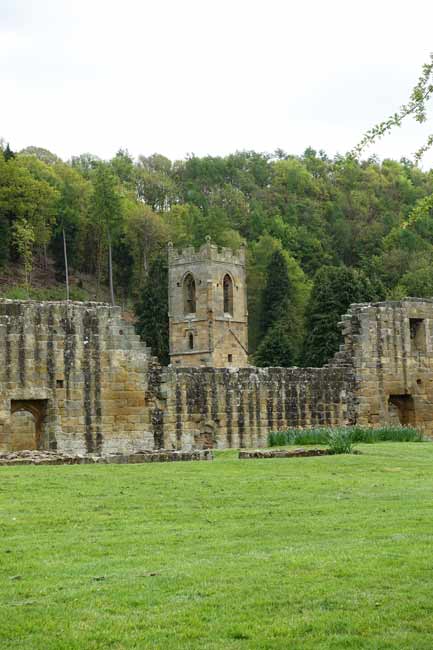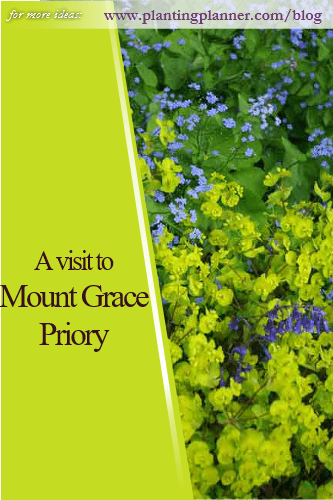from The Weatherstaff PlantingPlanner – intelligent garden design software
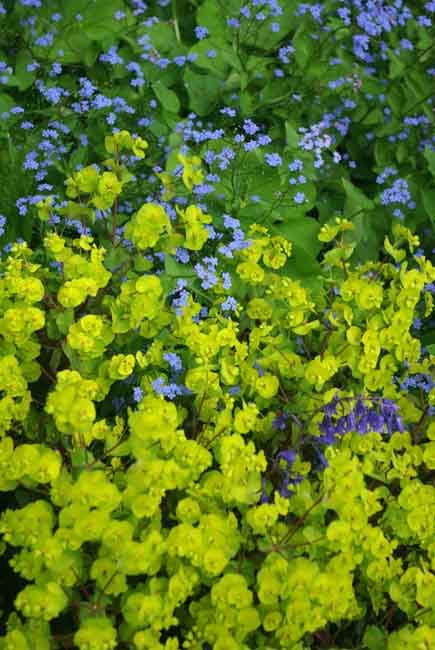
Mount Grace Priory in North Yorkshire is the best preserved of the nine medieval Carthusian monasteries in England. Now owned by the National Trust and operated by English Heritage, it’s a fascinating place to visit for both historians and plant-lovers.
The Carthusians are an order of the Catholic Church, founded in 1084 by Bruno of Cologne. The first Carthusian monastery was set up in the Chartreuse Mountains in south-eastern France. The mountains gave their name to the monastery – Grande Chartreuse. Later, the name was also shared with the greeenish-yellow liqueur the monks made there from the 18th century onwards, with its secret recipe of 130 herbs and flowers. The English word Charterhouse, which refers to Carthusian monasteries, has the same roots too.
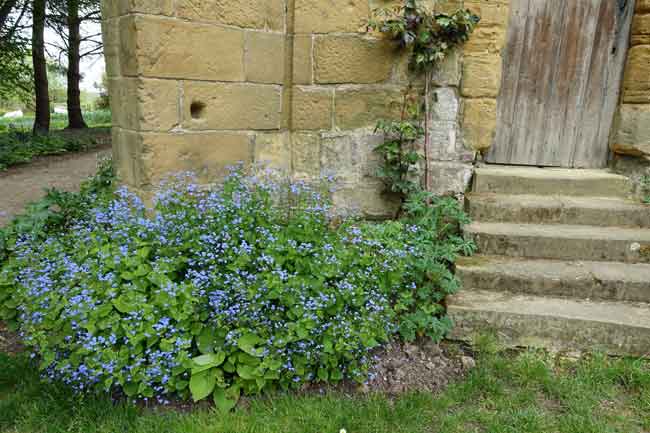
The strict life of solitude and contemplation drew others to the monastery and other priories were set up, including a number in England. Amongst them was Mount Grace Priory, founded in 1398 and suppressed, with the Dissolution of the Monasteries, in the 1530s. It was later rebuilt as a mansion and restored in the early 20th century in the Arts and Craft style by Lowthian Bell. More recently, in 2018, its 13 acres of gardens were redesigned by Chris Beardshaw, incorporating 7,500 herbaceous plants and 27,000 bulbs.
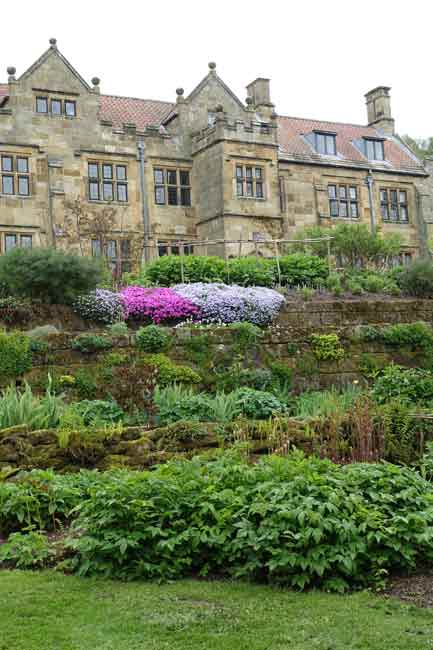
The Arts and Craft garden style is one of exuberant planting, flowing over a more formal architectural structure, usually constructed from local natural materials. At Mount Grace Priory, the stone terraces, close to the house, are richly planted with herbaceous and alpine plants.
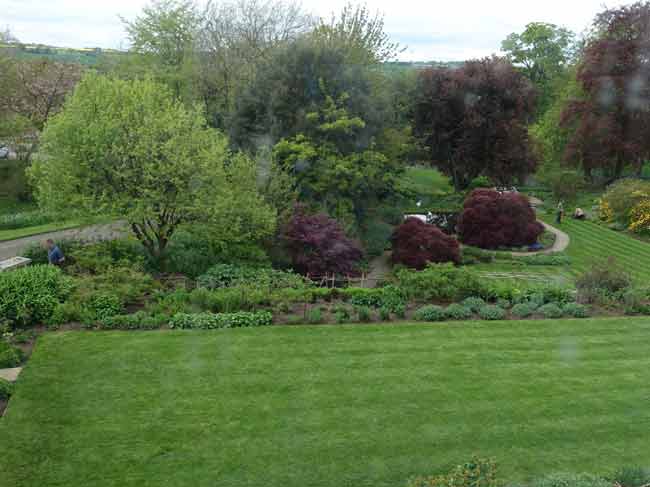
Further away from the house, the garden leads down to a more wooded and naturalistic area near the ponds. Typical Arts and Crafts plants included roses, peonies and irises and all of these can be found at Mount Grace. In May, the last of the daffodils are fading, but the fruit trees are in blossom and bluebells carpet the ground.
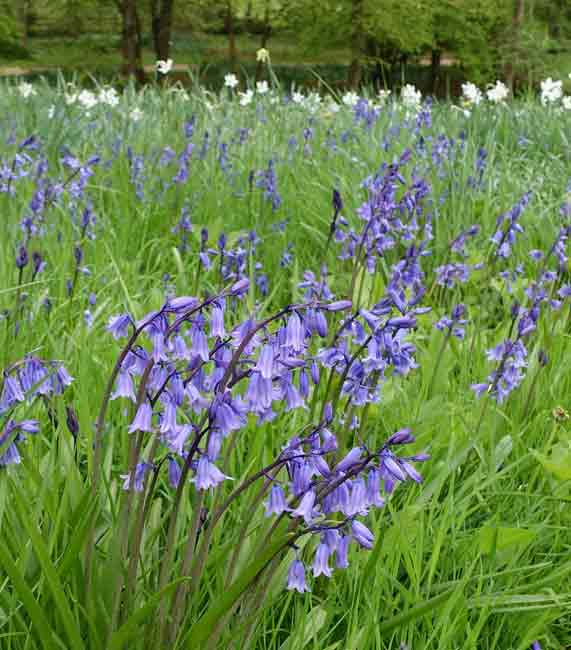
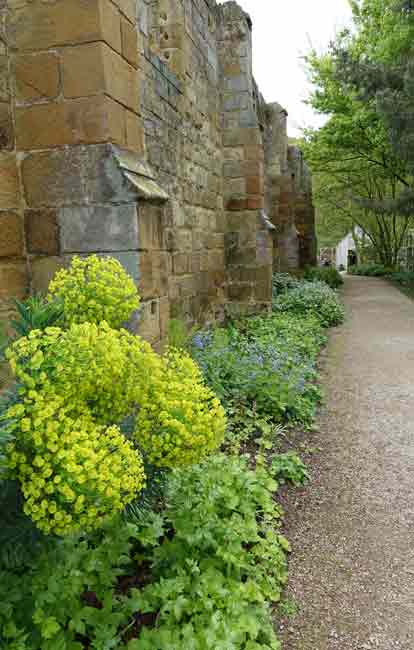
Billows of euphorbia hug the stone walls, along with drifts of Brunnera macrophylla. Euphorbia characias subsp. wulfenii (Mediterranean spurge) is an attractive evergreen shrub, creating a long season of interest and winter structure in the garden. Its upright stems have narrow, blue-green leaves and carry large cylindrical flowerheads from early spring to early summer. The chartreuse bracts, cupping the tiny flowers, provide the display. It grows to 1.2m high.
Euphorbia characias ‘Black Pearl’ is shorter, growing to 75cm, but has an enchanting dark eye to each flower.
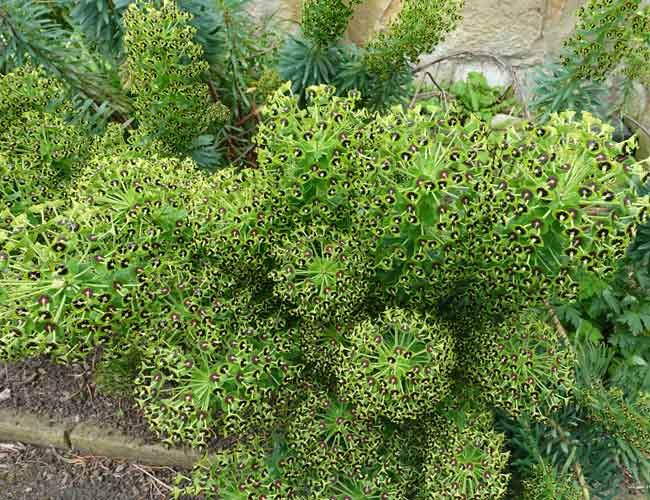
Bees are at work, busy visiting the dusky pink flowers of Lamium orvala. An enchanting perennial, it forms a clump of dark green leaves often edged with purple. The two-lipped flowers, the bottom lip attractively marked and mottled, are borne from late spring into summer and are a good source of nectar for bees.
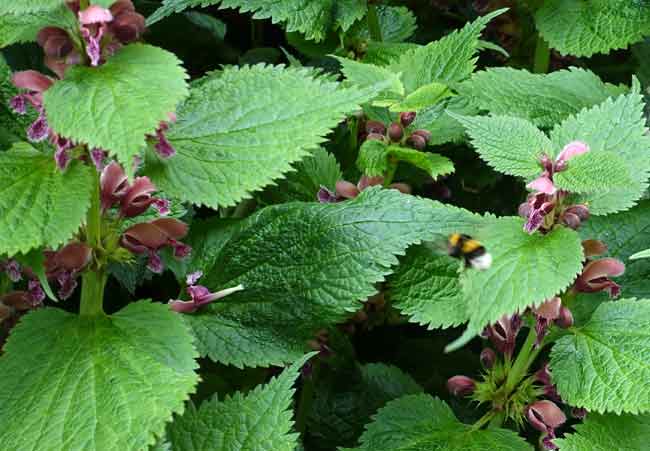
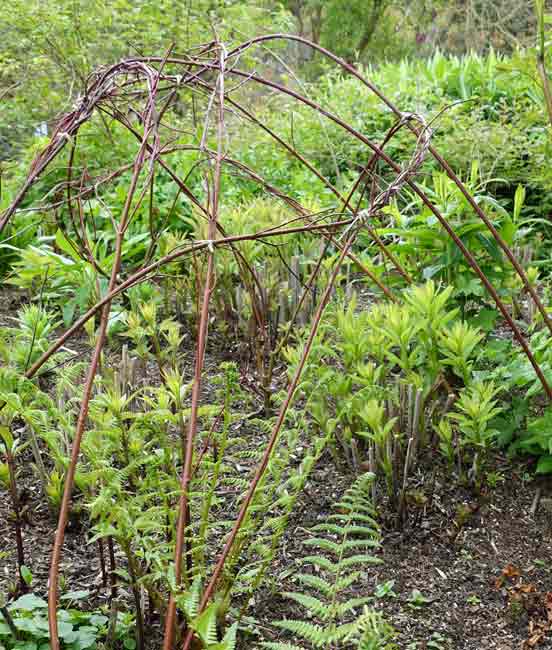
Though the ferns are still unfurling and the irises and peonies have yet to flower, willow and hazel supports give structure to the beds.
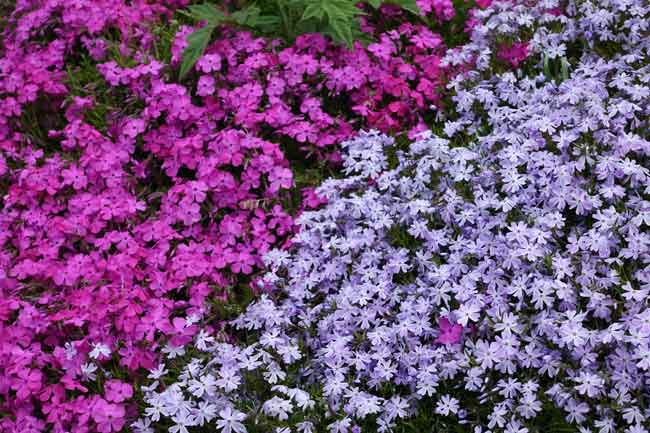
There is plenty of colour though. Mossy saxifrage edges the weathered paving stones, while aubrieta and phlox tumble from the terrace edges.
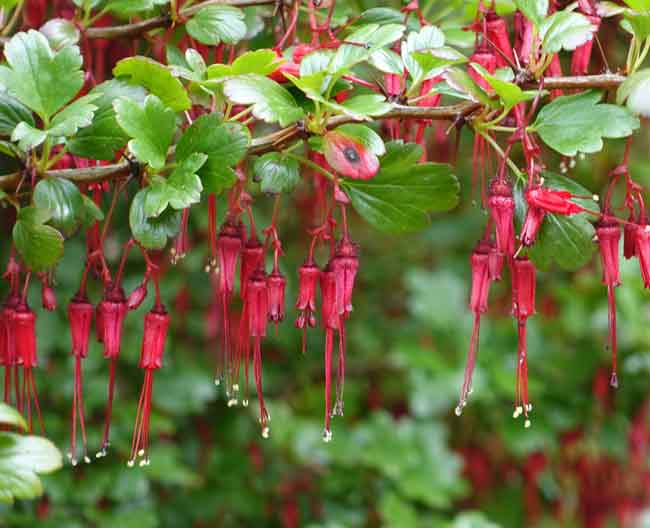
An interesting fuchsia-lookalike turns out to be the fuchsia-flowered gooseberry, Ribes speciosum, which has an Award of Garden Merit. The shrub has bristly stems and grows to about 2m in height. Its long stamens protrude well below the deep red flower in mid to late spring.
The reconstructed monk’s cell provides a fascinating glimpse into the silent, meditative lives of the Carthusian monks. Behind each cell lie the individual gardens, where the monks would have grown herbs for medicinal and aromatic uses, as well as fruits and vegetables and probably flowers just for their beauty.
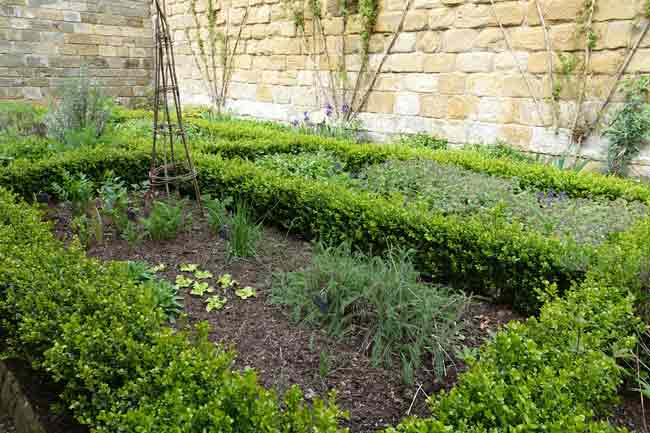
The box-edged flower beds today contain mandrake, henbane and salad burnet. Climbing plants clamber up the fan-shaped trellis on the stone walls and the plump peony buds hold the promise of delights to come.
Pin for later
For more gardening ideas, click here to follow the Weatherstaff PlantingPlanner on Pinterest.


